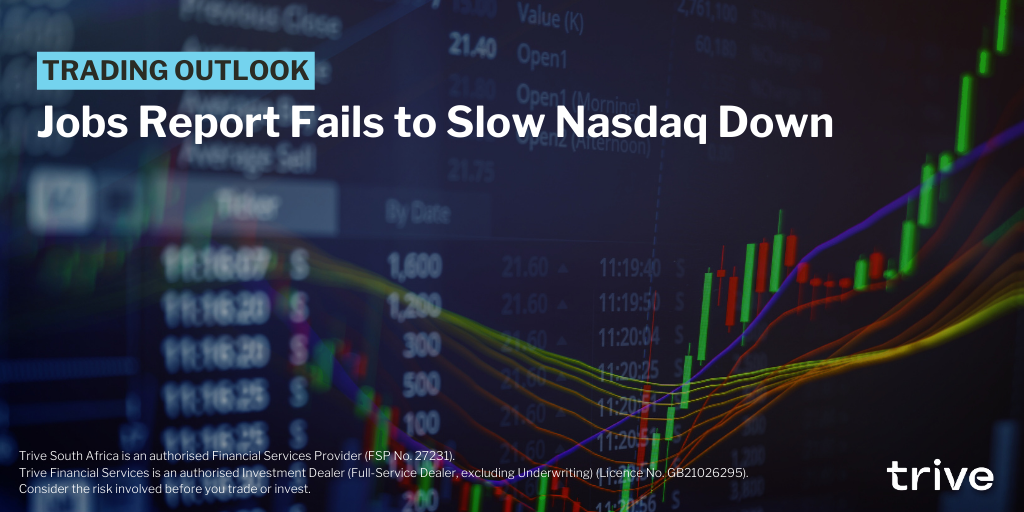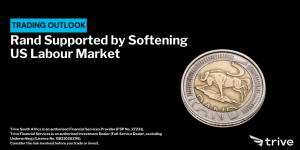
The Nasdaq 100 futures (CME: NQ) are riding a lucrative upward trend despite the unexpected strength of Friday’s jobs report. The tech-heavy index reaped the rewards of Meta’s impressive earnings release, witnessing a remarkable 20% surge in its stock and a staggering $196 billion addition to its market value – the most significant single-day increase in Wall Street history. Amazon joined the upward momentum with a nearly 7% rise, fuelled by positive earnings sentiments. However, a robust jobs report restrained the futures’ gains, with Non-Farm Payrolls (NFP) exceeding expectations at 353K, almost doubling the forecasted 180K.
Despite the anticipated rise to 3.8%, the unemployment rate held steady at 3.7%, and average hourly earnings growth surpassed predictions at 4.5% compared to the forecasted 4.4%. Consequently, the market adjusted its expectations for the Federal Reserve’s initial round of rate cuts. The CME FedWatch Tool indicates a mere 17.5% probability of easing in March, down from the 46.2% predicted a week ago. Even May’s predictions were moderated, with the probability of a cut decreasing from 86% last week to 68%. This reflects the unexpectedly robust state of the US economy, which is adapting well to higher rates and diminishing the urgency for immediate and aggressive easing measures.
Technical
On the 4H chart, an ascending triangle pattern has emerged. Resistance at 17,729.50 is proving a challenging resistance to breach, but the formation of higher lows on the downswing keeps the hopes of a bullish breakout alive. However, the 50-SMA (blue line) has recently crossed above the 25-SMA (green line), suggesting that the short-term bullish momentum may be running out of steam.
Support at 17,639.25 is currently under the spotlight. If the futures remain above this level, it could retest the resistance of the triangle again to attempt a breakout. However, if the support fails to hold, the futures could pull back toward 17,454.75. This move could push the price below the 25-SMA and 50-SMA, making the dynamic support of the triangle vulnerable to a breakdown and trend reversal. If the triangle gets broken down, support at 17,338.50 at the 100-SMA (orange line) could be important.
Conversely, if the support at 17,639.25 holds in the upcoming sessions, a breakout can occur at 17,729.50. The resistance at 17,795.25 could then present a hurdle to the upside, potentially acting as a pivot point to a retracement. However, if this resistance gets breached, the price could trickle higher toward the 161.8% Fibonacci extension at 18,037.00.

Summary
While the market tempered its expectations for aggressive rate cuts early in 2024 following the latest jobs data, the Nasdaq 100 futures maintained their upward trajectory, as optimism surrounding the latest earnings from some technology giants has kept the bullish momentum going. If support at 17,639.25 holds in the upcoming session, a triangle breakout could occur, potentially propelling the futures to new heights.
Sources: Koyfin, Tradingview, CME Group
Piece written by Tiaan van Aswegen, Trive Financial Market Analyst
Disclaimer: Trive South Africa (Pty) Ltd (hereinafter referred to as “Trive SA”), with registration number 2005/011130/07, is an authorised Financial Services Provider in terms of the Financial Advisory and Intermediary Services Act, 37 of 2002. Trive SA is authorised and regulated by the South African Financial Sector Conduct Authority (FSCA) and holds FSP number 27231. Trive Financial Services Ltd (hereinafter referred to as “Trive MU”) holds an Investment Dealer (Full-Service Dealer, excluding Underwriting) Licence with licence number GB21026295 pursuant to section 29 of the Securities Act 2005, Rule 4 of the Securities Rules 2007, and the Financial Services Rules 2008. Trive MU is authorized and regulated by the Mauritius Financial Services Commission (FSC) and holds Global Business Licence number GB21026295 under Section 72(6) of the Financial Services Act. Trive SA and Trive MU are collectively known and referred to as “Trive Africa”.
Market and economic conditions are subject to sudden change which may have a material impact on the outcome of financial instruments and may not be suitable for all investors. Trive Africa and its employees assume no liability for any loss or damage (direct, indirect, consequential, or inconsequential) that may be suffered. Please consider the risks involved before you trade or invest. All trades on the Trive Africa platform are subject to the legal terms and conditions to which you agree to be bound. Brand Logos are owned by the respective companies and not by Trive Africa. The use of a company’s brand logo does not represent an endorsement of Trive Africa by the company, nor an endorsement of the company by Trive Africa, nor does it necessarily imply any contractual relationship. Images are for illustrative purposes only and past performance is not necessarily an indication of future performance. No services are offered to stateless persons, persons under the age of 18 years, persons and/or residents of sanctioned countries or any other jurisdiction where the distribution of leveraged instruments is prohibited, and citizens of any state or country where it may be against the law of that country to trade with a South African and/or Mauritius based company and/or where the services are not made available by Trive Africa to hold an account with us. In any case, above all, it is your responsibility to avoid contravening any legislation in the country from where you are at the time.
CFDs and other margin products are complex instruments and come with a high risk of losing money rapidly due to leverage. You should consider whether you understand how these products work and whether you can afford to take the high risk of losing your money. Professional clients can lose more than they deposit. See our full Risk Disclosure and Terms of Business for further details. Some or all of the services and products are not offered to citizens or residents of certain jurisdictions where international sanctions or local regulatory requirements restrict or prohibit them.




